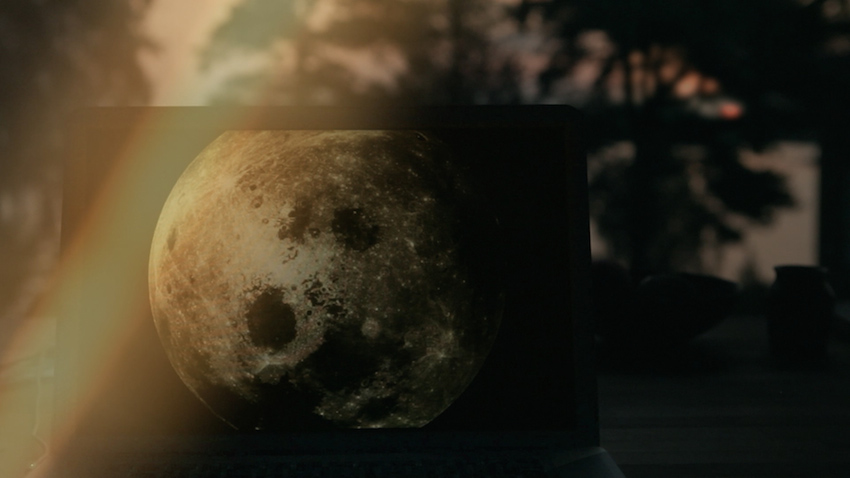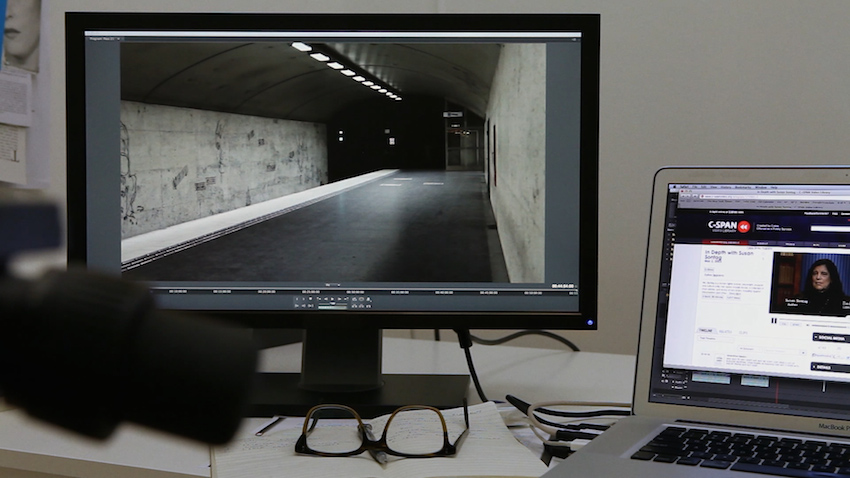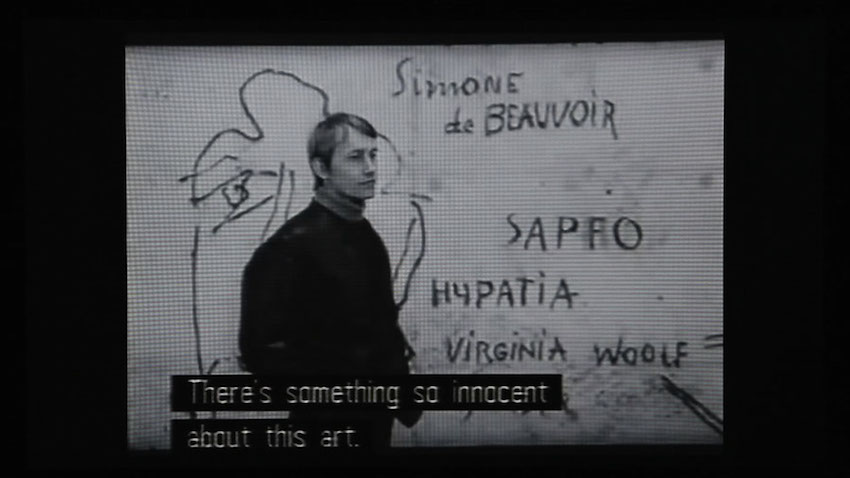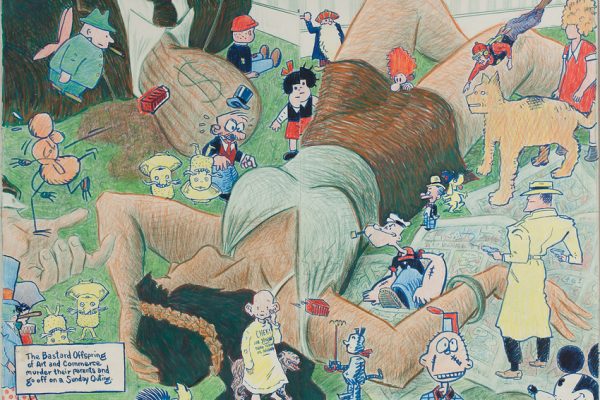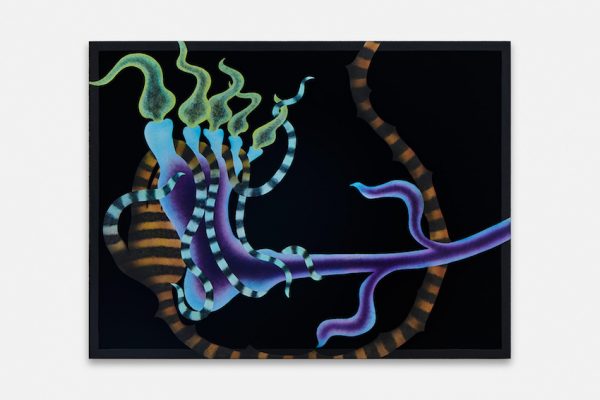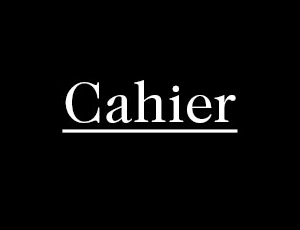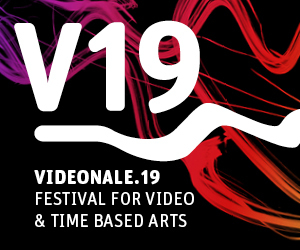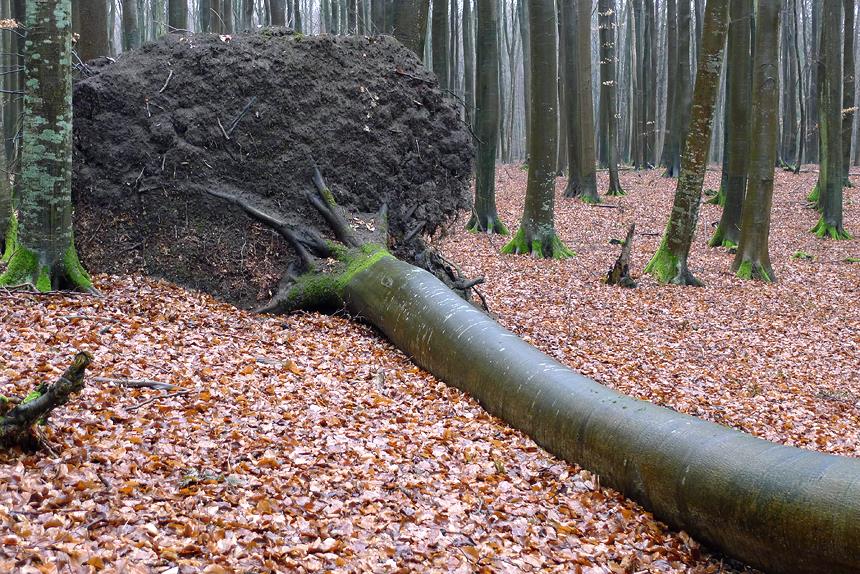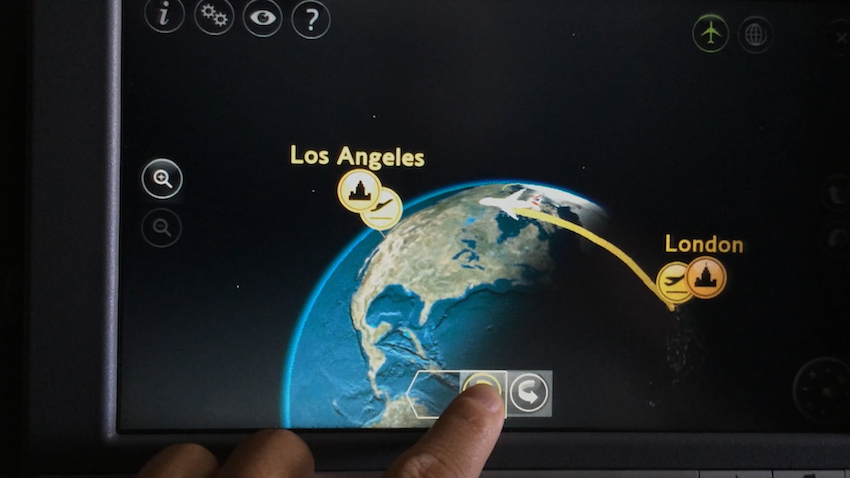
Lisa Tan
American artist Lisa Tan will be presenting her most recent videos in Cologne this month. Her works have been included in exhibitions across the US and Europe. Franziska Wildt talked with her about her essayistic installations.
Lisa Tan, born 1973 in Syracuse, NY and based in Stockholm, mainly works with video, photography and installation. Her video installations‚ ‚Sunsets‘ (2012), ‚Notes from Underground‘ (2013) and ‚Waves‘ (2014-15), create a fluid space of reflexion that oscillates between image, language and sound. Through a continuous movement between these phenomena, Tan establishes complex correspondences, which evoke shifting emotional and cognitive distances between form and content. Shapes of thought are constantly transformed, converging and diverging with perceptions, producing an experience, approaching the limits of meaning, unfolding a rhythm, feeling the blues, breaking at the shore.
Franziska Wildt: In your interralated videos‚ Sunsets‘, ‚Notes from Underground‘ and ‚Waves‘, interviews seem to play an important role. Why are you interested in interviews?
Lisa Tan: I’m not interested in interviews any more than the next person.
Interviews have a certain structure: a question, an answer, then perhaps another question related to the answer. Interviewer and interviewee largely abide by these conventions (I’m doing it now). So that when there’s a deviation—an answer that stumps, or when the typical structure is abandoned altogether—the effect can be stunning.
Franziska Wildt: You’ve previously described the translation of the interview with the Brazilian writer Clarice Lispector in Sunsets as a soundtrack that was sometimes dissonant. What does that mean?
Several years ago when I was reading about Clarice Lispector, I came across a dazzling interview with the writer. Her answers are delivered in a strange, hazy way. She rides the edge of subjectivity and we get to witness threshold itself.
At the time, an English translation wasn’t available, so I asked a Portuguese-speaking friend for help. I didn’t know it then, but the process of translating this interview would become the driver for the piece.
There’s already a dissonance between Portuguese spoken by somebody from Brazil (Lispector) and someone from Portugal (my friend)—but from what I understand, Lispector’s speech possessed a strange intonation—even to a Portuguese-speaking Brazilian. Sunsets unfolds around these dissonances and moments of alignment.
Franziska Wildt: How do you think about the relation between meaning and sound of language?
Lisa Tan: I need to hear words, feel the vibrations they make, run them through my body, as a matter of comprehension and of producing meaning. I’ll relate a personal hang-up: I read aloud when I write, as can be seen in Waves.
Franziska Wildt: What role does sound play in your work more generally?
Lisa Tan: In the recent videos, it’s treated as an affective material. Even with textual language, i.e., an interview, a recorded phone conversation, passages where I’m heard writing and reading aloud—I try to treat sound not as an informational but as experiential.
This is subtle—perhaps not even detectable— but the intention is there, to not speak over any given image, but rather to disassemble image and sound conventions in video and film, so that the experience is more akin to entering into something that’s already in motion, something concerned with rhythm over plot, to borrow from Woolf.
Franziska Wildt: In the fragments from the interview with Susan Sontag, featured in your video ‚Notes from Underground’, she speaks about violence and morality, which brings to mind her essay „Regarding the Pain of Others“.What do you think about the relationship between art and violence, and between ethics and aesthetics?
Lisa Tan: I selected sections from two specific interviews. In one, Sontag speaks about human capacity for violence. In the other, about her creative and intellectual work as an essayist, novelist, critic, and filmmaker. In either case, I use her persona and her voice to help me think through aesthetics, violence, consciousness…
Having an impossible conversation with her is part of the work involved in trying to find a representation that can in turn converse with encounters that effect how any of us regard “the pain of others.”
Franziska Wildt: In Waves, you evoke the idea of digital data, streaming through cables underneath the sea. The internet brings images close to us „like water from a robinet“, as Benjamin predicted. Do you think that by bringing the images closer, the world moves away further? How, in your perception, do our technologies effect the distances between us and between us and the world?
Lisa Tan: Yes, I think that current technologies abstract and collapse distances.
In order to be able to read these abstractions, or comprehend distances, I need to feel them in some material fashion. Because, as I mentioned before, I don’t really understand things so well, unless I can feel them in an embodied way.
Part of the work involved in making Waves was somewhat performative. For example, writing on airplanes, testing out my language when it’s over an ocean, between zones of assimilation, just a body hovering in between subject positions. Or another example, a simple one: Using Google’s street view movements in the Städel Museum where one of Courbet’s wave paintings usually hangs, in order to see this way of seeing.
Franziska Wildt: This painting by Courbet at the Städel Museum Frankfurt seems to play an important role in your video. How did you grow interested in it?
Lisa: I’ve always liked these wave paintings by Courbet. And I started paying closer attention to them when I was researching waves along with Woolf’s novel The Waves. I chose to focus on the one in the video, because of the distinct blue room in the Städel where it’s usually hung.
In the video, I speculate on how looking at the painting online connects me to Google’s data center in Finland. And how the material connection between Courbet’s painting and the Baltic Sea, used to cool the data center, is nothing less than spectacular.
Franziska Wildt: In Waves you also look at a painting by Otto Scholderer (1834-1902), The violinist by the window. A young violinist is sitting in a window frame, gazing into the distant nature and the window mirrors the window on your screen. Like in this painting, there is a sense of melancholy in your work. How do you think about melancholia in the digital age?
Lisa Tan: You’re so observant. I’ve never put it in terms of melancholy. I think about loss. But loss is also productive. The experience of loss is what drives language into literature.
Franziska Wildt: What do we loose in the digital age? – overtones in mpg3 files, resolution in jpgs, intimacy in social relations?
Lisa Tan: We can lose our ability to be affected, possibly on a neurological level. Philosopher Catherine Malabou writes about this, and she emphasizes how political power can capitalize on affectless masses.
Franziska Wildt: But maybe political power can capitalize just as much on affective responsiveness. Then, an affective distance, as in melancholy (or humor) could, on the contrary, open up a space for reflection and critical thought…
Speaking of melancholy, you’ve mentioned the blue room in the digital gallery of Staedelmuseum, in which Courbet’s painting is situated. Maybe there is a correspondence between the blue museum space in Waves and your attempt in Sunsets, to capture the blue hour? Why are you interested in the blue hour?
Lisa Tan: I became interested in it because I moved to Sweden and was depressed! My mood is greatly affected by light conditions. And blue hour is extreme at this latitude. But it also interests me because it’s a threshold moment when things are more apt to shift and you can see or feel this shifting, consciousness included.
Franziska Wildt: In your video, the recordings of the blue hour are contrasted with the solar system screensaver on your computer. Do you think the nature of affects is artificial like a digital image of Saturn?
Lisa Tan: Well, I don’t think that the screensaver is artificial. I treat it like nature, or any other encounter that produces an affect. It is a shared reality among many. In turn, even if one’s melancholy is the outcome of too many screen hours, it’s still melancholy, it still makes one feel quiet inside.
Franziska Wildt: The painting by Otto Scholderer is a Romantic work. What do you think about Romanticism?
Lisa Tan: I’m more interested in material reality.
Franziska Wildt: Courbet was a proponent of Realism – what do you think about Realism and the relationship between Courbet’s political views and (the style of) his art woks? What do you think about this with regard to your own work?
Lisa Tan: I’ll say that tasking art with the service of politics or sociality is not something that speaks to me. Courbet’s wave painting contains within it so much sensation that it edges towards non-sense. It exists as an experience of the unknowable. And within the painting’s ability to describe this unknowable thing, it reveals the material force and ontology of the very thing it depicts. I’m aspiring towards this too. Or, likewise to do what Lispector’s writing does, in how she uses language to disassemble language, and in doing so, speaks closer to the truth.
Franziska Wildt: Next to The Wave in the (non-virtual) collection of Staedelmuseum hangs a painting by Jacques Louis David (1748-1825), Marat, assassinated in the bathtub. It reminded me of what you mention in Waves about Baudelaire, who said, if he wanted to write about the sea, he’d take a bath. What do you think of Baudelaire’s method? Is the bathtub a political zone?
Lisa Tan: This is a great observation. And I think you, or one could write a whole essay to think through this issue.
Franziska Wildt: Thanks, I might do that.
Franziska Wildt: There is a scene in Waves where you explain, that the pink noise of the ocean can mask the human voice, and one hears voices fading into the sound of the sea. This made me think of Freud’s criticism of the oceanic feeling…
Lisa Tan: Freud thought Romain Rolland’s notion of the oceanic feeling was irrational, but he eventually came around to the idea, thinking that the primordial is what must connect things and people to each other. I’m interested in the primordial because it’s prelinguistic, more feeling than thought. It relates to states of becoming, and to affects— which are inherently pre-subjective.
Franziska Wildt: But I would suppose that being connected to each other already presupposes a division into separate subjectivities (and into subject and object). In that sense, intersubjectivity is impossible in a pre-subjective state. Therefore, the dissolution of subjectivity into such a state, might not only be a risk for the autonomy of the subject, but also imply an even deeper loss.
Lisa Tan: I see what you’re getting at, but I should clarify that the proposal is not to stay within a pre-subjective or non-subjective state (that would be madness). It’s to try to harness such moments in order to re-enter the world at a different angle.
Franziska Wildt: In Waves you mention a translucent jellyfish, whose knowledge is not bent towards possession or productivity, which has „non-reasons“ and only becomes visible when necessary. Would you suggest to become more like Jellyfish?
Lisa Tan: We’re not capable of jellyfish (non)knowledge, but I use it as a figuration for a desire to experience the world as it is, beyond the realm of thought.
Franziska Wildt: And what do you think about this desire? Is it reasonable or irrational?
Lisa Tan: It’s necessary.
Bergson instructs that embodied knowledge, or intuition—or what I’m figuring as jellyfish (non)knowledge—is knowledge that can aid rational intellect. In other words, consider that there are multiple forms of knowledge that are best when harnessed together.
Franziska Wildt: After mentioning jellyfish, you talk about limits and explain that some philosophers have said „it is only language which may keep their something-else-ness afloat“. — What is the something-else-ness of the limit?
Lisa Tan: I don’t know what the something-else-ness is! The video marks the exploration of it, but it certainly does not find it—nor “the limit.” Art cannot really do this.
Franziska Wildt: It was said of your works, that they create a state of liminality and thereby gauge distances of all sorts. To gauge a distance, it seems, that one would need some kind of scale. Could the movement between voices, words and images be understood as a process of measuring the distance between them? Is meaning produced in this fluid distance?
Lisa Tan: I think you’ve picked up on the measuring tools. Great.
Franziska Wildt: It reminds me of the idea about Realism in art, that not „the real“ is its reference, but the historically changing concepts of reality. Which would mean that Realism’s objective is not an invariant reality, but one that is in constant flux. What do you think about this notion of reality? Do we need sinuous art to grasp it’s form?
Lisa Tan: I do agree with this notion of reality. After making the recent videos, I have a seed of a notion: “the provisional as an aesthetic.” It’s still too early to get into it here, but it has to do with finding a way to express flux, contingency, risk.
SCREENING AND WORKSHOP by Lisa Tan, Labor für Kunst und Forschung at the Institut für Kunst und Kunsttheorie, Köln, Hosted jointly with the IFS and Cologne Game Lab, Tuesday, 24.5.2016, 18:00 – 21:30, Wedsnesday, 25.05.2016, 18:00 – 21:30. For more on Lisa Tan, see lisatan.net
Franziska Wildt is a young artist and writer, currently based in Frankfurt, who is mainly working with installation, performance, video and text.
Article image: Lisa Tan, Waves (2014-15), video still

